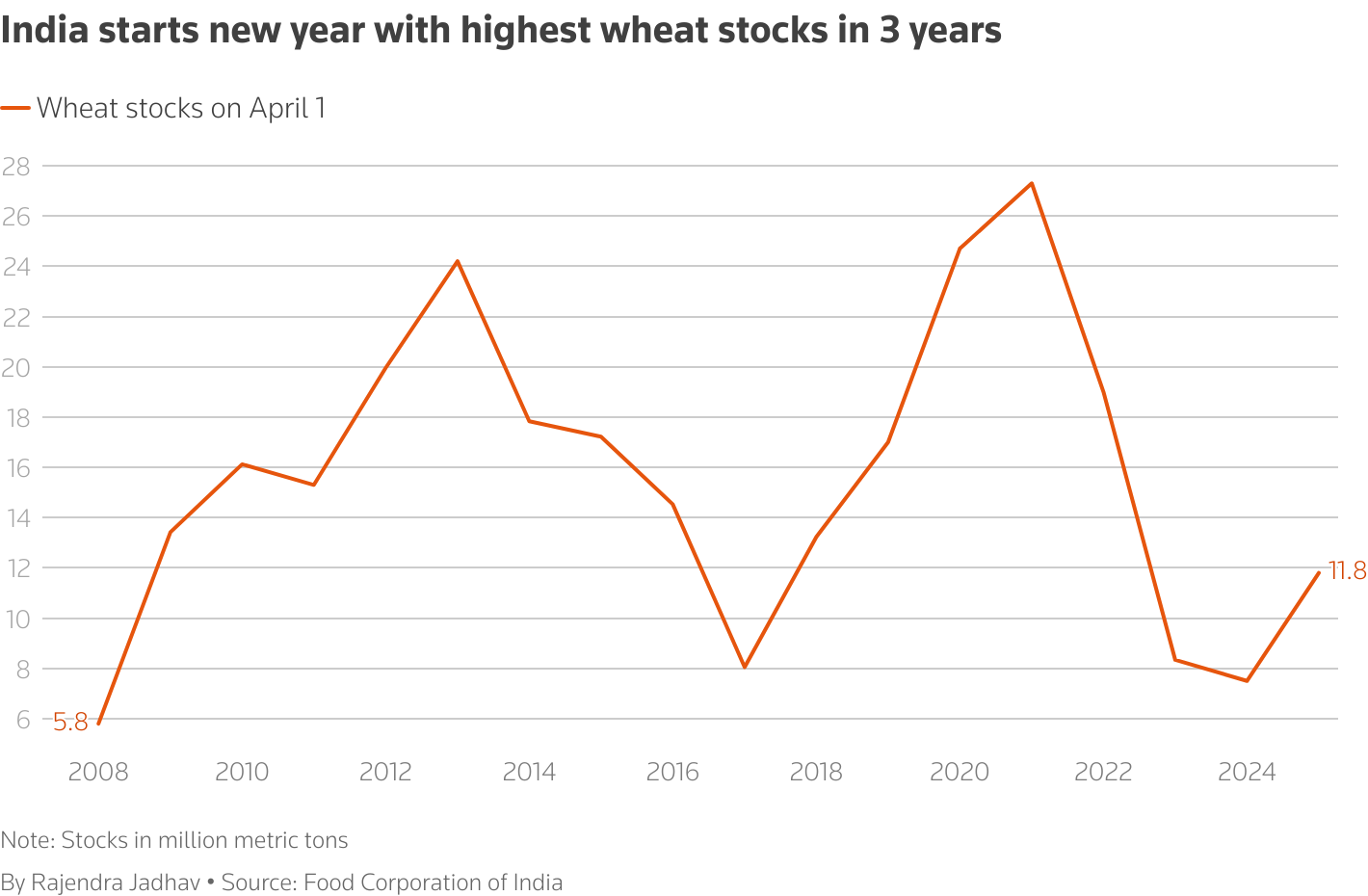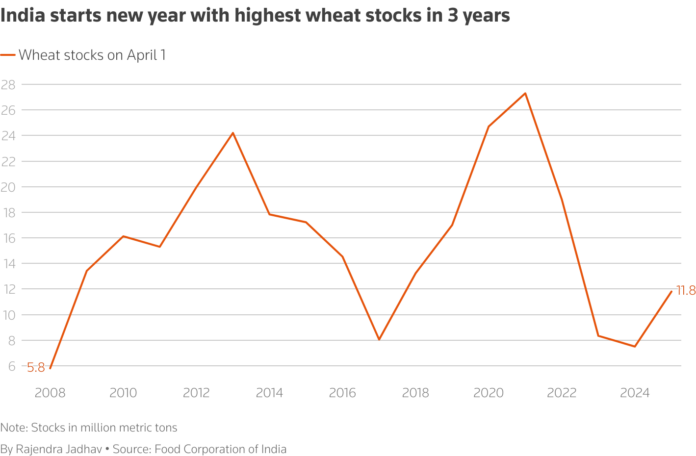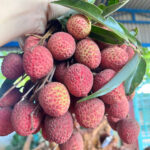India is experiencing a bumper wheat harvest, which means the country will likely meet domestic demand without imports this year. This is in contrast to predictions that India would need foreign supplies and could potentially drag down global wheat prices.
India banned exports of this staple crop in 2022 and extended the ban for two more years due to drought-like conditions, depleting reserves, and pushing prices to record highs. This situation led to a scenario where the country might have to import wheat for the first time since 2017. However, fortunes are changing for the world’s second-largest wheat producer, with this year’s harvest estimated to be around 4 million tons higher than last year’s.
“After struggling in recent years, our land finally seems to be out of distress and free from the worry of importing wheat,” said Amit Takkar, director of New Delhi-based agricultural consulting firm Conifer Commodities.
The Food Corporation of India (FCI), the state-owned reserve entity, has purchased 29.7 million tons of new-season wheat from domestic farmers—the highest in four years—after missing procurement targets for three consecutive years.
Food Minister Pralhad Joshi said earlier this month that the FCI’s total wheat purchases could rise to 32-32.5 million tons this year, along with 11.8 million tons of opening stocks. This reserve of around 44 million tons would significantly exceed the FCI’s annual requirement of 18.4 million tons to run the world’s largest food welfare program, providing free grains to nearly 800 million people.

India’s wheat reserves are at their highest in three years.
With the world’s second-largest wheat consumer not needing imports, global grain prices are likely to come under pressure as production remains high in top exporting countries like Argentina, Australia, and Canada, while import demand from top consumer China has weakened.
Global wheat prices have more than halved from last year’s record highs, falling to their lowest in nearly five years earlier this month.
Improved weather, higher-yielding climate-resilient seeds, and adequate soil moisture from last year’s abundant monsoon rains have contributed to India’s improved wheat output this year. Wheat prices rose nearly 15% over the past year due to consecutive poor harvests, encouraging farmers to shift to wheat cultivation.
Farmers in the central state of Madhya Pradesh, known for its premium wheat used for pizza and pasta, reported higher crop yields this year due to milder March weather. India’s wheat stocks held in government warehouses surged 57% to a three-year high at the start of the new season.
A senior government official said India has no plans to reduce or eliminate the 40% wheat import tax and is not considering wheat imports through diplomatic channels as previously discussed. The official also stated that India is not contemplating allowing exports and instead focuses on building reserves.
Luscious First-of-the-Season Lychees: An Indulgent Treat at $2.60/lb
The coveted first harvest of luscious Luc Ngan lychees is now available in Hanoi, commanding a premium price of 60,000 VND per kilogram.
The Billionaire’s Swift Action: Tran Ba Duong’s Chu Lai – India Direct Sea Route, a 100 Billion VND Project Completed in Just 4 Months
This event holds great significance, not just for THILOGI and Chu Lai International Port but also for the entire Quang Nam province and the Central – Highlands region.





















